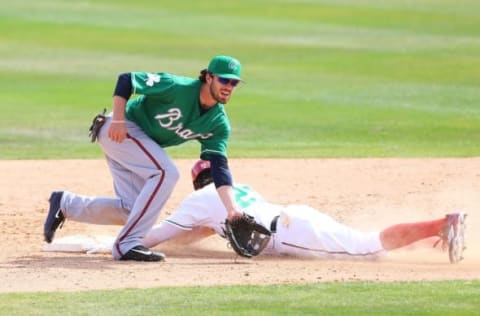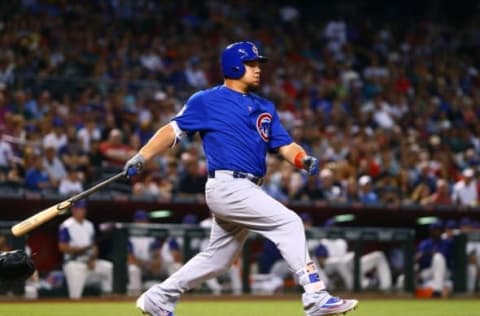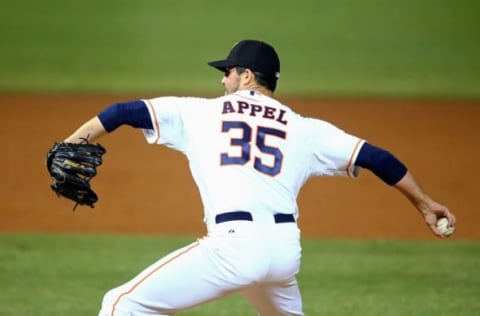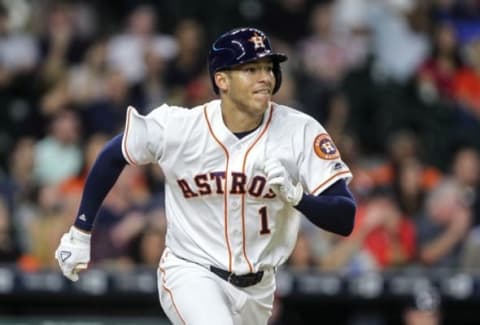MLB: Will the Draft Hold Up the Next CBA?


Draft Manipulation and the MLB CBA: An Introduction
We’ll start this off with a quick writer introduction. My name is Benjamin Chase, and this is actually my first article for Call To The Pen! I have a few years under my belt already writing for Tomahawk Take on the FanSided network, the Atlanta Braves blog.
If you’re familiar with my work, you’ll know that much of my focus and interest is in scouting and the road to the major leagues. I’ve written over 30 scouting reports on the Braves minor league system, and I love taking time to look at a player’s tape and video to see what’s in a player to make him tick.
With that said, the big area coming up in baseball regarding prospects is the annual draft, to be held June 9th. Many words have been written on who the best players are in the draft, who the Phillies should pick #1, and the merits of high schoolers vs. college players. This is not that post.
In the offseason after the 2011 season, Major League Baseball (MLB) and the Major League Baseball Players’ Association (MLBPA) entered into a new Collective Bargaining Agreement. Many remember this CBA for its striking moves toward drug testing, but it did some pretty significant things to change the way the MLB draft worked.
As mentioned in this archived MLB.com article by Jonathan Mayo, the previous system was essentially free-wheeling. A team at the 30th selection could spend as much for their selection as the team who selected 1st spent for theirs. This led to teams like the New York Yankees and Boston Red Sox (among others) spending heavily throughout the draft and causing players to refuse to sign with teams with lesser profiles in order to attempt to put themselves into better financial position.
The stated goal of this change to a “slotted” system was to ensure that all teams had a fair shot at players, and that teams would be able to sign the players they drafted. Interestingly, in the four drafts of this system (2012-2015), there have been 5 players selected in the first 50 picks of a draft who did not sign, and in the four years just prior to the agreement being signed, that total was 9, including two top-10 selections in the 2010 draft, which was likely an impetus for this change.
However, while the changes in the draft may have closed the door on some of the previous issues with the draft, it’s opened doors to new issues that likely were never even considered by those who set out to make these new rules. With the current CBA set to expire this coming offseason, what will these current draft loopholes and manipulations mean for changes in the next CBA?
Next: Current Methods

Draft Manipulation and the CBA: Current Methods
The current draft works with a slotting system to determine the value of picks. For instance, in this year’s draft, the #1 selection by the Phillies has a draft slot value of $9,015,000, while the #2 selection by the Reds has a draft value of $7,762,900. The values of all picks from rounds 1-10 are added together to form a team’s draft pool. In the 2016 draft, the #1 pool belongs to the team with the #2 overall selection, the Reds, with a draft pool of $13,923,700 due to having compensatory or competitive balance picks on top of their regular picks.
After the 10th round, all teams are given the same amount to spend across all their selections from round 11 to round 40. They can choose to load a significant amount to one player or spread it evenly across all of those selections, but they can also use any funds left over from rounds 1-10 in rounds 11-40. Each selection in those later rounds is “capped” at $100,000 and any selection over that amount requires additional funds from the draft pool from the first ten rounds.
Manipulation #1
This is where the first manipulation of the draft comes in. Watch the draft this year, and look back at previous years. Starting in roughly round 3, teams begin to load up on low-profile college players that they know will sign for low amounts of money in order to push more money toward the 11-40 rounds.
This has been the worst kept secret in the game thus far, something that all teams seemed to have figured out immediately in the 2012 draft already to buy extra signing bonus money for later in the draft. It’s simply a matter of when this draft manipulation begins for each team, not if.
Manipulation #2
Then we come to those compensatory and competitive balance picks I mentioned earlier. The old draft used to place a team that lost a significant player in the draft slot of the team that signed their player. Instead, now, the signing team loses their pick in the first round (this is protected for those teams in the first 10 picks), and the team that loses their player gets a compensatory pick after the first round.
Competitive balance picks were something new in the 2011 CBA. These were to seemingly help balance the small market teams with the large market teams by giving those teams with smaller markets an additional selection early in the draft to help build up their team with cheap, usable players. There are two rounds of CBA picks (as they’re termed), one after the compensatory round of the first round, and the second after the second round. The big thing – these picks are able to be traded!
When a team has multiple compensatory picks or competitive balance picks, that team can accumulate a high signing bonus pool. In fact, the top 4 bonus pools in the 2016 draft include three teams that make sense – the first three teams selecting in the draft, but one that may surprise, the San Diego Padres, who have the 3rd largest draft pool at $12,869,200 due to having the #8, #24, #25, and #48 teams in the top 50 selections in the draft.
Recent teams have used those high numbers to make deals with players before the draft for deals above their draft slot for their pick in order to have that player “fall” to them later in the draft. We’ll explore this further in the next slide.
Manipulation #3
The third manipulation happens when a team doesn’t necessarily use a bigger draft pool to make a deal with a player, but they pursue a “signable” player early to save money to pour into players they assume will want more money than other teams are willing to offer them.
We’ll explore all three of these in the next slide.
Next: Recent Examples

Draft Manipulation and the CBA: Recent Examples
I mentioned that the first manipulation was a common practice, so pointing out examples would take up an entire post.
Instead, we’ll explore the second and third manipulations I’ve mentioned. I’ll actually mention the third one first. The best example of this actually turned out quite well for the team in the “signable” player that they chose to go for. In the case in point, the Chicago Cubs used their #4 selection in the 2014 draft to select a catcher from Indiana University that they knew they could sign for less money than the slot required. Thus, Kyle Schwarber came into the fold.
The Cubs used the money they saved on college picks Schwarber, Jake Stinnett, and Mark Zagunis to pay heavily to three high school pitchers with big upside that had fallen, Carson Sands, Justin Steele, and Dylan Cease. Interestingly, Stinnett and Zagunis have been very solid prospects and we all know what Schwarber has become, and the high school pitchers have shown some promise, but none have panned out quite yet.
The Big Manipulation
The thing that is getting a lot of attention from the press and from MLB upper level types worried about the fairness of play among teams is the manipulation I discussed in scenario #2 on the previous page.
The most recent and blatant example of this was the Houston Astros last summer. Many reported before the draft began that Daz Cameron, a player who was expected to go in the 7-15 range in the draft, had a deal with the Astros for their later pick. This led to the assumption that the Astros were going to draft a player with the #2 overall selection that they could sign for a below-slot deal. That selection was Alex Bregman from LSU.
They also had picks #5, 37, 46, and 79 in the top 100 picks of the draft. With the #5 selection, they had another deal in place with a high school outfielder, Kyle Tucker, whose brother Preston Tucker was in the Astros system already. If you look around those first 3 selections, in order to get those two high school outfielders, the Astros picked college players in 7 of the first 10 rounds to help afford their move.
After the draft, it came out that Cameron had an $4M bonus set up with the Astros.
In light of this, many are seeing a possibility of multiple teams doing this same exact type of move in the 2016 draft, especially since the 2016 draft is labeled as having solid depth in talent, but not any necessarily elite talent at the top of the draft. You could see the Padres, Reds, Braves, Phillies, and even the Cardinals make some moves flexing their draft pool.
This kind of draft manipulation would likely have the same effect as the 2010 draft having 3 early picks not sign turn into a slotting system to encourage signability. How will they be able to quell this manipulation, though?
Next: Possible Solutions

Draft Manipulation and the CBA: Possible Solutions
First Idea: Make All Picks Trade-Able
Currently only the collective bargaining picks are able to be traded, and only once. While baseball’s development system would seemingly reduce the value of trading a pick in the same way that the NFL or NBA sees intrigue in guys who are drafted being able to help out their top-level clubs in their draft season, there could be a lot of publicity value drawn from the draft night intrigue as a team on the clock mulls the idea of trading out of their pick.
Take for example the Atlanta Braves this season. They have spent the last two offseasons loading their minor league system with incredible pitching depth. However, after the Phillies and Reds pick, they may find themselves wholly underwhelmed by the hitters left in that spot. However, a team like the Padres with 3 picks in the top 25 could make a move up to #3 to acquire that draft slot and that position to get a particular player they really want while allowing the Braves to select 3 “lesser” players that they can hope on their development system to build up along the way.
Second Idea: Force Money To A Particular Slot
This is an idea that has picked up some steam lately. Rather than attempting to legislate teams to spend within their limits, the rules would just change rather than counting overall 1-10 budget to watching over every pick with limits on over or under spending each slot.
Currently, teams can exceed their pool by 0-5% with only a financial penalty to worry about. Anything after 5% above their overall slot allotment begins to cost teams a draft pick, and no team has been so bold as to cross that threshold since the 2011 CBA was put in place.
With a similar percentage top and bottom limit on each slot, players would have a more secure guarantee based on where they were picked, and teams would be able to better slot players based on their idea of a player’s willingness to sign for a certain number. If it’s known that Jason Groome will go to Vanderbilt unless he receives money equivalent to the #3 draft pick, then a system that punishes team for going over their slot would mean Groome is no longer attractive to a team picking #8.
The big issue you run into here is that different players have different values to worry about. A player with an opportunity to go to get a free education in college has some leverage and may not accept a strict slot once it gets to a certain point in the draft, and that could lead to the issue that 2011 draft attempted to work on – players not signing.
Third Idea: Remove Amateur Eligibility
This one would be a biggie. For players in the NBA or NFL, they cannot be selected in the draft and retain their ability to return to college. That protects the teams and allows for negotiations with teams and players to have a much different tone.
A player like Kyle Funkhouser returning to college like happened this season after Funkhouser didn’t sign with the Dodgers in the 2015 draft wouldn’t happen in the NBA or NFL. Once a player is drafted, that player has lost his amateur status and cannot return to school. Why the NCAA allows players to go to school after being drafted by MLB and not the others is curious, to say the least.
While I struggle with this one due to a personal belief of having an open and free market for players to negotiate in, I also believe that the draft in baseball is an area that could be a much better use of team resources, and it’s a significant use of financial resources by teams each season.
Next: Top 30 Baseball Movie Characters
So what about you? Do you agree with any of these ideas? What are some of your ideas? Add in the comments below!